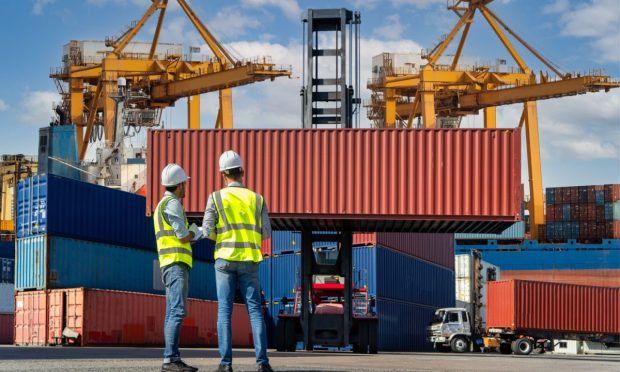Modernizing Legacy Industries Starts With Trust and Ends With Payments

Lasting business relationships are centered on trust, but often boil down to payments.
Within this environment, the right digital innovations, like the right B2B partnerships, can help make all the difference in capturing efficiencies and sustaining healthy growth.
As digitization increasingly comes for relationship-based sectors, like shipping and logistics, that are riddled with legacy processes and entrenched, familial partnerships, it is becoming more mission critical for future-fit solution providers to establish an operational baseline of understanding before moving to transform well-trodden traditions with next generation tools and systems.
Since the dawn of civilization, shippers and carriers have continuously strived to improve their carrying capacity while reducing empty miles and the risk of wrecks and snarls.
Seamless upskilling requires a certain trust that digital innovations will be useful, and a curiosity or education around their capabilities on the part of the buyer.
While shipping and logistics is a technically advanced and sophisticated sector, it is also deeply embedded in legacy processes and customs that vary across geographies and market maturations.
When the modern tech and protocols are stripped away, there remains an unchanged element of moving goods from point A to point B that has remained constant for the past 5,000 years.
At the center of that core endeavor is the enduring trust that the goods will arrive at point B.
And underscoring that trust, the same as it has throughout history, is payment for services rendered.
Read more: Shipping Sector Finds Smarter Ways to Operate Using Generative AI
A seismic Shift Across the Global Industrial Economy
The changing logistics landscape is evolving the expectations of enterprise customers.
Prompted by pandemic-driven, and macroclimate-accelerated, pain points and snarls of the past few years, many traditional and family-run shipping and logistics businesses are looking across the broader economic landscape and seeing a seismic shift taking place driven by smarter ways to operate.
They are increasingly realizing that they need to adapt to the realities of this new digital landscape, while at the same time remaining true to their core purpose of providing physical services.
“There’s legacy businesses, old traditional companies that have now reached a point in the last two years where they understand that if they don’t take the next step, they will have troubles, they might even close, because they now need technology to provide the right level of service that their customers are looking for,” Raz Ronen, CEO at FreightTech startup Wisor.AI, said in a discussion with PYMNTS.
That’s because even some of the most sophisticated global shipping, logistics, and freight companies operate without standardized payment and invoicing processes within their own firms.
Fragmentation among various regions as it relates to electronic invoicing versus manual methods tends to be the rule, not the exception.
But as customers become more sophisticated themselves, providing a seamlessly automated experience can serve as a critical competitive differentiator and growth accelerator.
“We’re moving beyond the days in which emails, paper and even handwritten invoices have gummed up the works, and ultimately have kept payments (and thus goods) from getting where they needed to go,” Flexport Chief Financial Officer Kenny Wagers told PYMNTS at the end of last year.
See also: Moving Freight Payments at Digital Speed Starts With Data
Melting the Iceberg of Legacy Processes
The international freight market being a “largely offline endeavor” has resulted in “tens of billions of dollars of waste,” Zvi Schreiber, CEO of trade tech solution Freightos told PYMNTS in March.
After all, the countless phone calls, emails, and even faxes that underpin key business relationships and contracts within the industrial economy do not represent the type of structured relationships that other sectors boast.
Many operators and observers believe there is almost too much volume to standardize the relationships, and fragmentation is emerging as a critical hurdle given the fact that how data is collected, disseminated, and presented within the industrial economy is historically siloed.
That’s why PYMNTS research has found that there exists an ongoing drive to modernize procurement systems and logistics and supply chain functions.
“Trust is an important key in this industry. It is and will always be a physical and complicated process to move goods, but it will steadily grow more digital, more efficient, and companies will have better abilities,” Wisor.AI’s CEO Raz Ronen said.
“All these incredible transformations with cloud computing and the internet have helped us organize and disseminate information,” Pat Dillon, CFO at intelligent supply chain platform Flock Freight, told PYMNTS earlier this month. “But now, that transformation is increasingly coming to the physical world of transportation, and we are really excited about the momentum.”
A rising tide lifts all boats, and the ongoing use of data to drive efficiency, visibility, and transparency within industrial operations and processes is unlikely to relinquish the ground and market penetration it has so far gained.
As long as buyers and sellers continue to be paid how and when they prefer, working relationships within the industrial economy will continue to flourish with the integration of today’s innovations.

